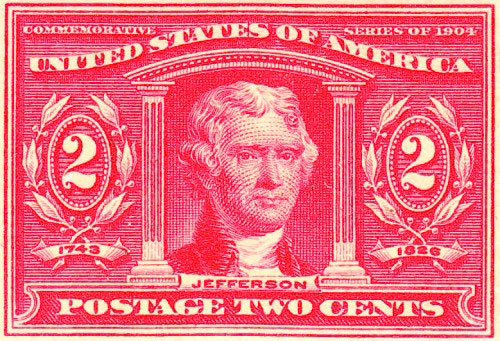The Library of Virginia recently received a highly competitive Save America’s Treasures grant in the amount of $110,000 for the conservation of the gubernatorial papers of Thomas Jefferson.
The correspondence, letters, and documents pertaining to Thomas Jefferson’s service as the second governor of Virginia bring to life the daily challenges faced by him and other leaders during the Revolutionary War, while drafting the Articles of Confederation, and when addressing frontier relations. The list of Jefferson’s correspondents in the collection reads like a who’s who of American history and includes John Jay, James Madison, Baron Frederick von Steuben, John Paul Jones, George Rogers Clark, among other notables. The collection consists of 1,992 manuscript pages, and three letterbooks.
This Save America’s Treasures grant will facilitate the preservation and digitization of the entire collection, ensuring public access to these valuable materials.
This will be the second time these particular documents will go through a preservation process. In the 1930s, The Library of Virginia (then the Virginia State Library) partnered with William J. Barrow, a pioneer in conservation practices. Barrow and his Richmond-based company began work on colonial- and revolutionary-era records held by the archives utilizing his new laminating technique. This new method, which used cellulose acetate film, was widely accepted as a stable and effective means of preserving documents. Within a few decades, however, archivists and librarians discovered that documents which had been laminated or “barrowed” were becoming unstable with the cellulose acetate laminating film’s deterioration. Documents and volumes suffering the worst effects emitted a strong vinegar-like odor, indicating a chemical reaction was taking place.
Left intact, the lamination on the Jefferson papers will continue to degrade, eventually buckling and warping the pages in the collection. Despite the deteriorating laminating film, most of the Jefferson papers currently appear to be in stable condition within the laminate. Their current stability makes it all the more important to begin the conservation process now before any long term damage takes place.
Following the removal of the cellulose acetate laminating material, the documents will be cleaned and de-acidified then repaired as needed to restore them to their original condition. Repairs to the manuscripts will include mending tears and breaks.
The executive papers and letterbooks of Governor Thomas Jefferson, 1779-1781, contain a number of folio items that were split by the Barrow Laboratory in order to facilitate the lamination process – these folios will be restored to their original appearance. Additionally, wax seals removed during the lamination process will be reattached to the documents.
The grant will also provide greater access to the documents. In the 1990s the Library’s Digital Library Project digitized the microfilm copy of the Jefferson Papers and attached the image to a very skeletal catalog record. These catalog records have already begun to be enhanced with further subject headings. New scans will be created from the originals since many of the microfilm images were of poor quality. The new digital images will be available online.
The Library was one of 61 recipients out of a pool of several hundred applicants for this funding. The grants are made in collaboration with the National Endowment for the Arts (NEA), the National Endowment for the Humanities (NEH), the Institute of Museum and Library Services (IMLS), and Save America’s Treasures private partner, the National Trust for Historic Preservation.












(Originally posted on VA -HIST listserv)
The best laid schemes o’ mice and men gang aft agley– Robert Burns.
W. J. Barrow’s pioneering research done in the old Virginia State Library (now the Library of Virginia) into the causes of the deterioration of paper was of the very first order of importance; unfortuanately, the process that he devised for preserving paper was not so good and had unanticipated ill consequences. There’s a very fine brief biography of Barrow in volume one of the Library of Virginia’s Dictionary of Virginia Biography.
Brent Tarter
The Library of Virginia
brent.tarter@lva.virginia.gov
(Originally posted on VA-ROOTS listserv)
Dale, any chance we can get the large collection of Jefferson books and papers found just this week somewhere, I think, in New England?
R. W. Crenshaw, M.D.
Charlottesville, Virginia
(Originally posted on VA-ROOTS listserv)
My mistake; found at Washington U in St Louis.
R. W. Crenshaw, M.D.
Charlottesville, Virginia
(Originally posted on VA-ROOTS listserv)
Dr. Crenshaw,
Right. The New York Times story from Monday reads that Washington University’s library is now the third largest repository of Jefferson’s books after the Library of Congress and UVA. As far as I know the LVA has no plan to attempt to acquire these books. I doubt WU would want to give up its new distinction as the largest repository of Jefferson volumes west of the Mississippi. Thanks for reading!
-Dale Dulaney